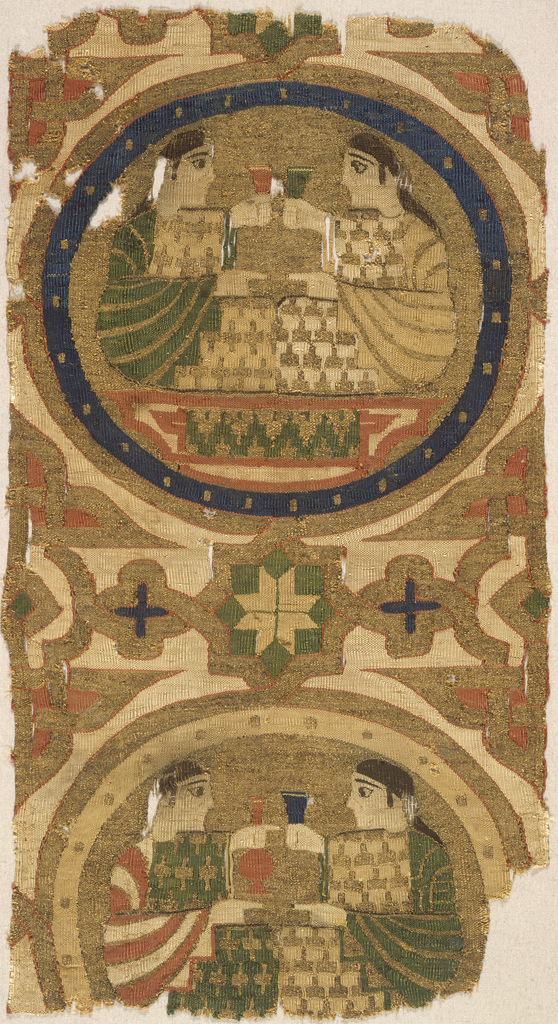Admirers of this exquisite tapestry fragment woven in medieval Spain fondly refer to it as “the Drinking Ladies”—an apt description for the two pairs of beautifully-robed women who lift their cups and bottle in salutation. The Drinking Ladies communicates the pleasures of female companionship amid the sumptuous environment of the wealthier classes. This was the time when the Alhambra was in its greatest splendor, with every surface of the royal residence covered in elaborate decoration. Politically, it was the pinnacle of Muslim control in Spain and a period when the richness of Moorish culture accounted for the extraordinary craftsmanship exemplified in both the Alhambra and the Drinking Ladies.
As curators, we are constantly “reintroduced” to our collection when we prepare for visitors, classes, publications—or even a blog post. When I reviewed the decades of research on the Drinking Ladies for this entry, I was particularly curious about a reference to the Drinking Ladies made by the Bauhaus’s most illustrious weaver, Anni Albers, best known for her textiles and her writings on textiles.[1] Albers included an image of the Drinking Ladies in her seminal book, On Weaving, which shows a detail of the lower medallion with a woman holding a cup. She used this work in her chapter, “Tapestry,” as an illustration of the tapestry technique—specifically, the slit tapestry technique used in the Drinking Ladies. Although we generally think of room-size pictorial weavings when we hear the word tapestry, the composition and scale of tapestry can vary widely. Important for Albers, however, was to show the continuum of this technique—from 1600-year-old Peruvian examples (which she revered the most) to the Drinking Ladies through to contemporary examples, including her own designs.
“Tapestry is a form of weaving that reaches back to the earliest beginnings of thread interlacing, is still with us today, and may have a future noteworthy in its promise,” said Albers. How right she was.
[1] One of the most detailed references about the Drinking Ladies is in the Chronicle of the Museum for the Arts of Decoration of the Cooper Union, 1943. p.383.
